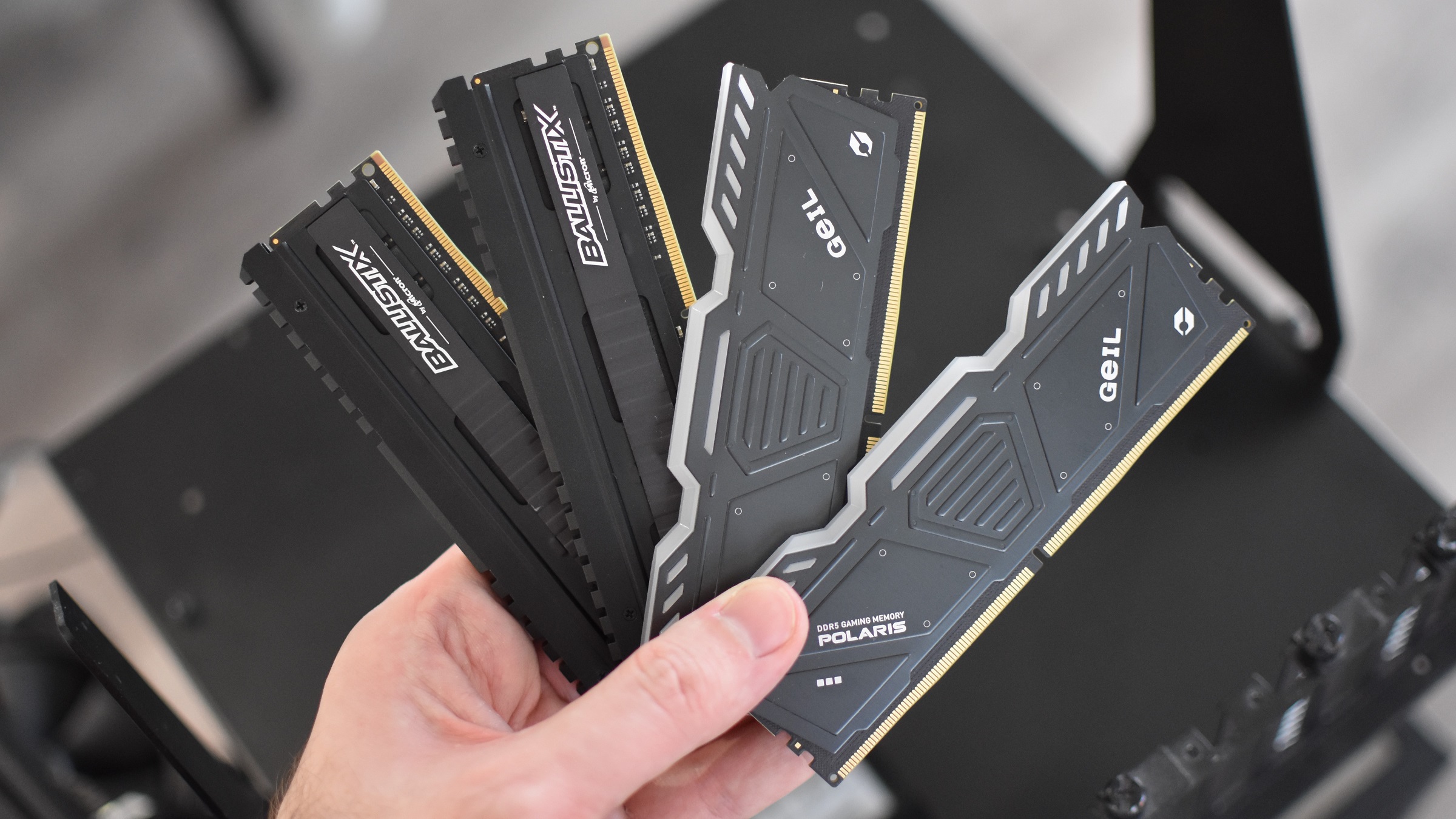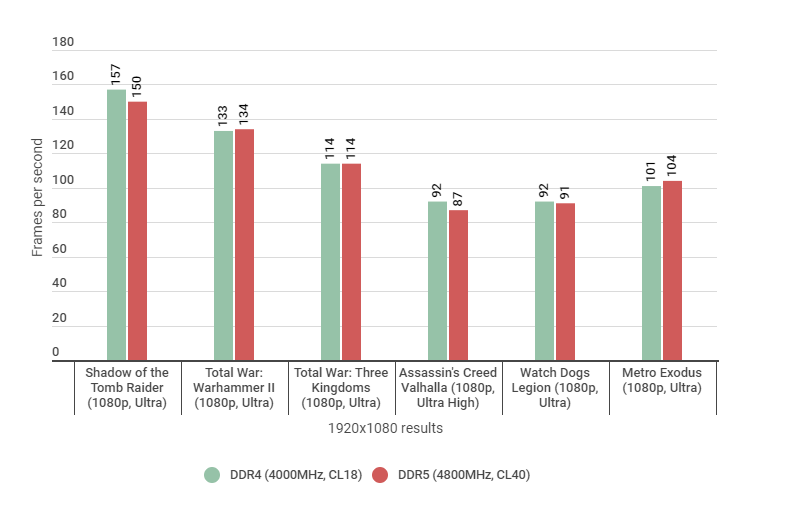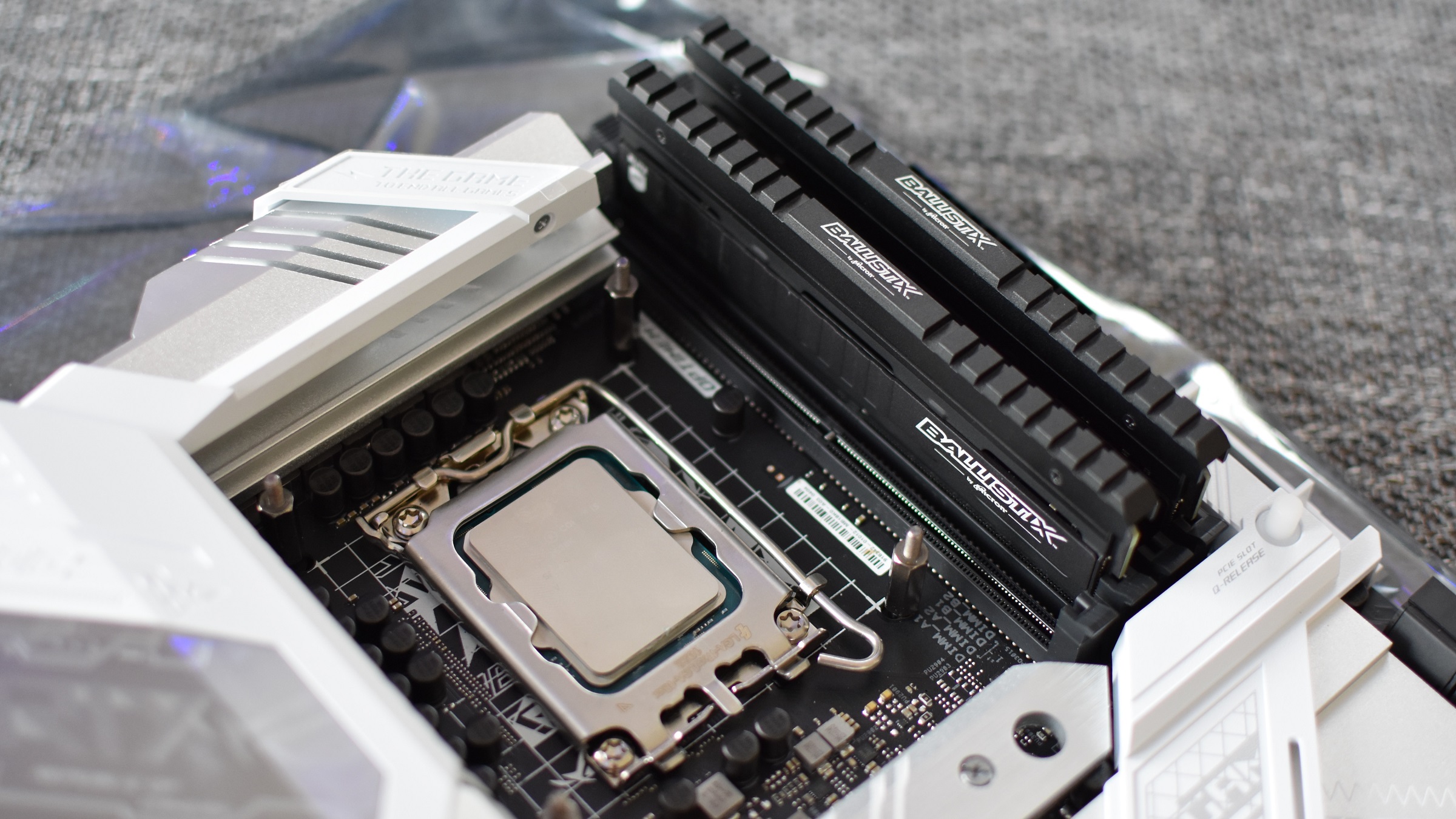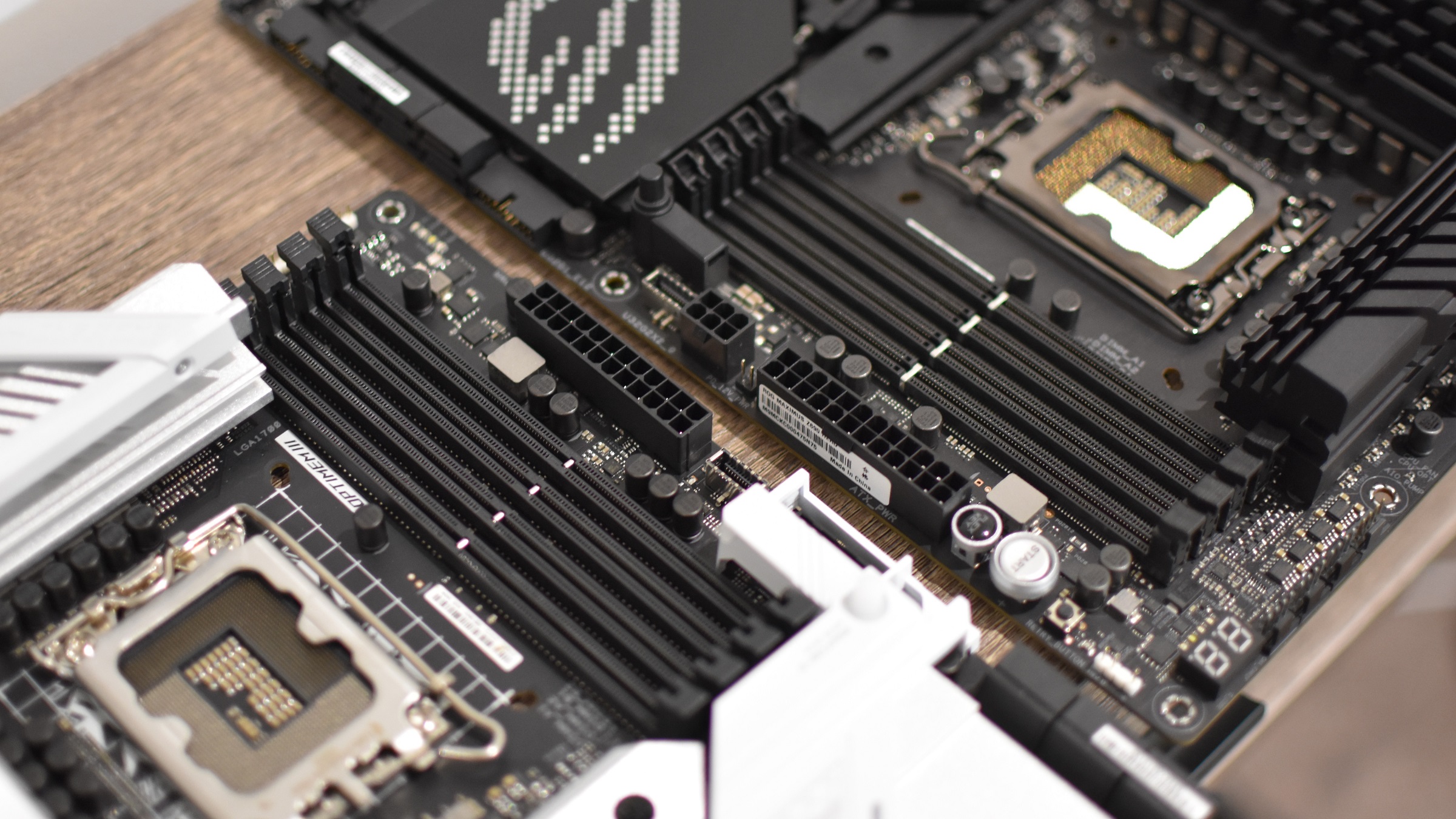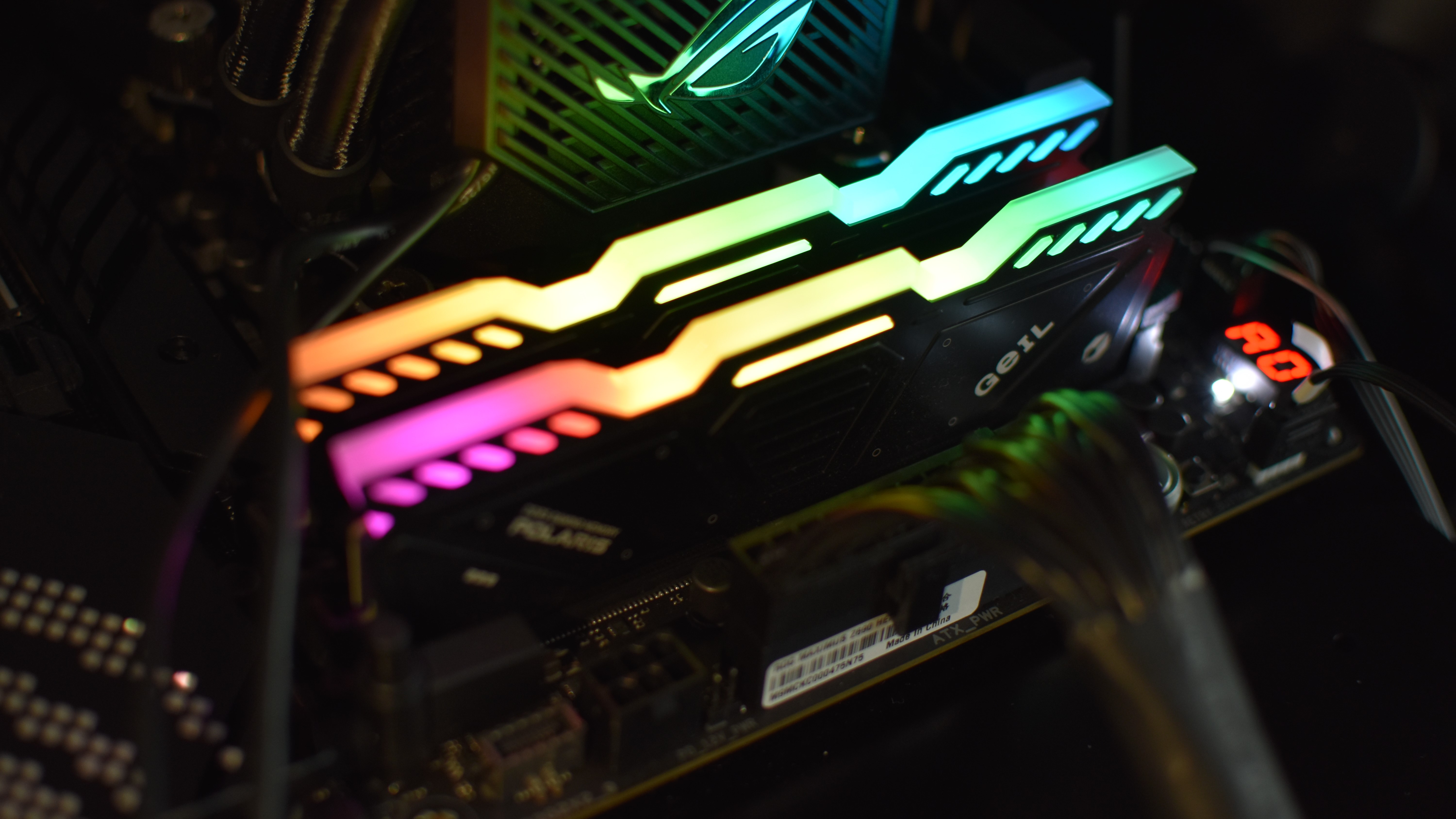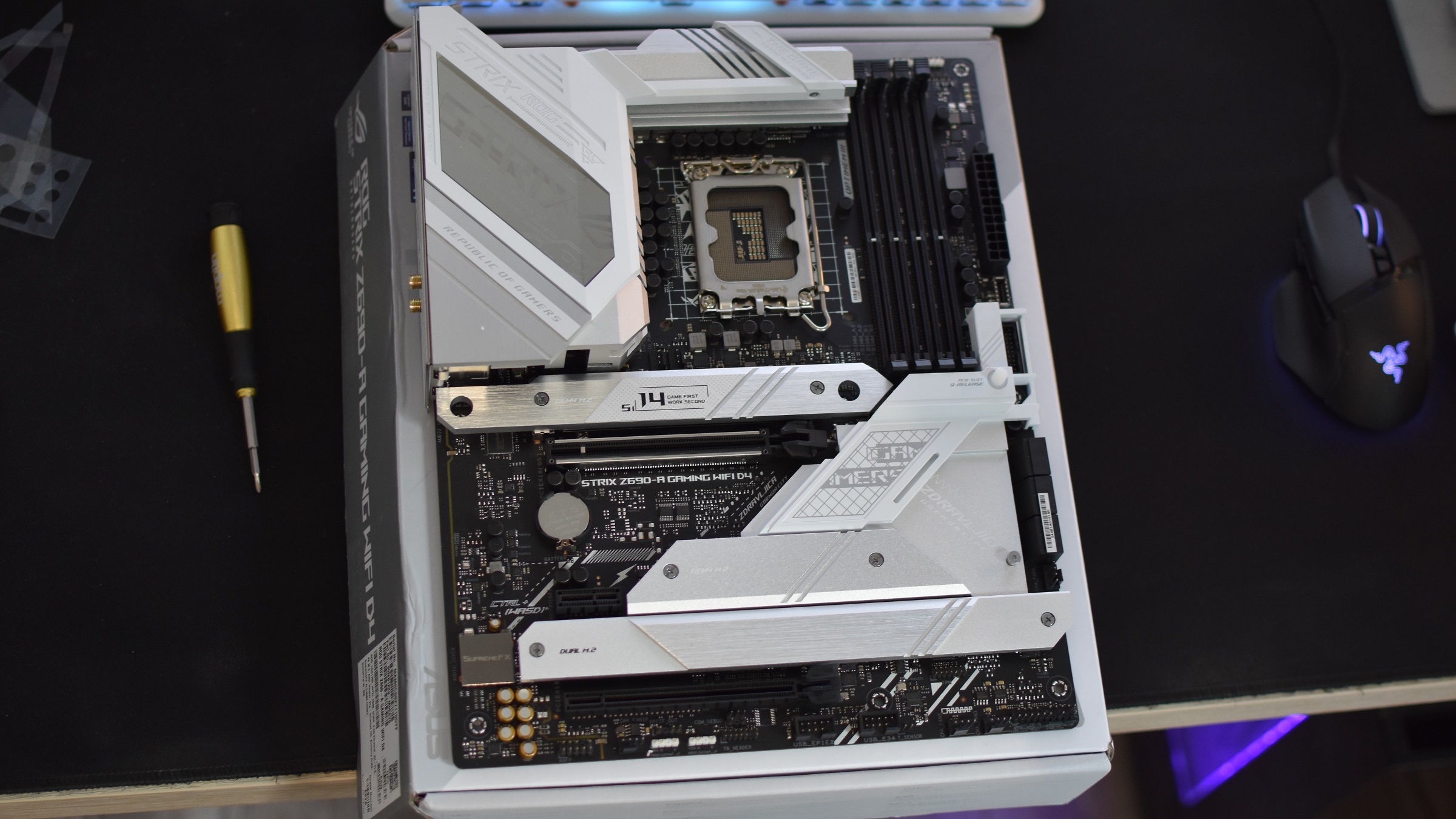Because the two aren’t cross-compatible, you’re stuck whatever you pick for as long as you use that motherboard – so it is an important decision. As things stand, though, it should also be an easy one, as DDR4 can currently provide as-good or better performance in games while being far more easily attainable. The situation could change in time, but for now let’s consider why you shouldn’t necessarily switch to DDR5 for a new CPU.
DDR4 vs DDR5: Performance
I originally tested the Intel Core i5-12600K and Intel Core i9-12900K with 16GB of DDR5 RAM, and both were intensely impressive chips; I still think the Core i5-12600K in particular is the CPU to buy for mid-range and high-end PC builds alike. Now that I’ve finally got hold of a compatible DDR4-based motherboard as well – the Asus ROG Strix Z690-A Gaming WiFi D4 (£310 / $350) – it’s time to see how the i5 handles games with the older memory. To recap, the results below were recorded at 1080p using the Core i5-12600K and an Nvidia GeForce RTX 2080 Ti. In the DDR4 corner, the ROG Strix Z690-A Gaming WiFi D4 was paired with 16GB of Corsair Ballistix Elite memory running at its stock speed of 4000MHz, while my original DDR5 testing used 16GB of Geil Polaris RGB RAM (at stock 4800MHz speed) and an Asus ROG Maximus Z690 Hero motherboard. RAM, of course, has never had as much of an impact on gaming speed as CPUs and graphics cards, but we can see here that the latest generational leap doesn’t produce a marked advantage at all. In fact it’s DDR4 that comes out looking slightly better, with an extra 7fps in Shadow of the Tomb Raider an extra 5fps in Assassin’s Creed Valhalla, and only a 3fps deficit in Metro Exodus. In all the other tests, DDR4 and DDR5 are basically even. The only time DDR5 clawed out a significant lead was in Cinebench R20. My DDR5-based rig scored 736 in the single-core test and 6733 in the multicore test, both higher than my DDR4 setup’s scores of 703 and 6699 respectively. These aren’t huge discrepancies, though, and if you’re more concerned with gaming than with photo or video editing, it’s essentially moot anyway.
DDR4 vs DDR5: Frequencies and latencies
This performance parity clearly flies in the face of conventional wisdom around PC hardware. Surely newer, shinier thing equals faster, better thing? There are, to be sure, various technical upgrades to DDR5 that make it superior on paper to DDR4. You can tell just from the specs of the RAM I used that frequencies – the number of times the RAM cycles each second – are going to be faster across the board on DDR5 than they are on DDR4. 4800MHz would be a monstrous, potentially even harmful overclock on DDR4 memory, but on Geil’s DDR5 kit it can perform that many cycles safely and straight out of the packaging. And with higher overall bandwidth than what DDR4 can offer, DDR5 should be well-placed for maximising performance. DDR5 is more efficient, too. It lowers the operating voltage from DDR4’s 1.2v to 1.1v, which doesn’t sound like much but drastically reduces the amount of power the memory is using at any given time. That’s especially useful when matching it up with an Alder Lake chip, as while Intel’s CPUs are alluringly powerful, they’re quite eager to glug from the PSU tap as well. Why, then, can DDR4 keep up so well in games, even being occasionally faster? As far as I can tell, it comes to down to DDR4 RAM having much lower latency than DDR5 – latency being the delay between data being sent from the RAM to the CPU. Apologies in advance for the number spillage, but let’s use the Crucial and Geil memory I tested with as examples. The Crucial Ballistix Elite DDR4 RAM has a lower frequency of 4000MHz, but a much faster latency CAS Latency (CL) of 18: meaning it only takes 18 cycles for data from the RAM to become available after it’s been requested. The Geil DDR5 has a CL of 40, so takes over twice as many cycles to perform the same action. And that’s not a shortcoming that’s limited to this specific model: pretty much all DDR5 kits that have launched or been announced are rated at either CL40 or CL38, whereas even affordable DDR4 kits might come in at CL18, CL16 or CL15. The difference is obviously reduced by DDR5 frequencies being higher, so it doesn’t take as long to simply run through 40 cycles as it would on DDR4. But the actual delay will, in al likelihood, remain longer. If you’re really curious, you can find out the true latency of RAM in nanoseconds by using a calculator like this one; my Crucial DDR4, for record, has a calculated latency of 9ns, while the supposedly faster Geil DDR5 comes in at 16.6ns. Repeat that longer delay for every single piece of data that the CPU accesses from the RAM while you’re playing a game, and the fact that DDR4 can outpace DDR5 no longer sounds so surprising. There is hope for DDR5, as DDR4 faced a similar latency problem when it first launched – hence, at least in part, why it didn’t see off DDR3 overnight. It’s reasonable to assume that DDR5 will improve just as DDR4 did, and that there will be a time when it can deliver all of the speed and efficiency advantages without the drawbacks. Alas, it is not this day.
DDR4 vs DDR5: Price and availability
Another good reason to stick with DDR4 is the cost, and not just for the RAM itself. At over £300, the ROG Strix Z690-A Gaming WiFi D4 I used is obviously a very premium piece of kit, but it’s also something of an extreme example – Alder Lake-ready, DDR4-based, full-size ATX Z690 motherboards start at £170, and you can expect many more affordable mobo options when 12th Gen chipsets like B660 launch as alternatives to the top-end Z690. This could apply to DDR5-spec motherboards as well, but right now the cheapest ATX model I’ve seen is a cool £230. My ROG Maximus Z690 Hero, meanwhile, costs £520 / $600 – hundreds more than the DDR4-based ROG Strix Z690-A Gaming WiFi D4, despite having only modestly better PCIe and external I/O specs. Making direct price comparisons for DDR4 vs DDR5 memory is harder, if largely because so little of the latter is actually available. Ostensibly DDR5 launched a few weeks ago, but the vast majority of RAM kits are still listed as out of stock or “coming soon” at reputable retailers – including the Geil Polaris RGB. I did find this Crucial 16GB DDR5 kit listed at £138, but that too isn’t expected to deliver for another few weeks. And doesn’t have a heat spreader. Lame. Granted, my Ballistix Elite kit appears to be having availability problems of its own, but you can get a 16GB, stock 4000MHz/CL18 kit for £131 with the G.Skill Trident Z. And there’s no shortage of much cheaper DDR4 kits too; for instance, you can currently get 16GB of ever-reliable Corsair Vengeance LPX DDR4 for just £50. I suppose you could buy a DDR5 motherboard as an act of futureproofing, holding out for when its latency problems are fixed. But the idea of futureproofing is that you don’t need to make repeated purchases later on, and because you’d be forced to use high-latency DDR5 until then, you’d have to splash out on yet another memory kit when lower-latency models eventually appear. And by then, your CPU and chipset will no longer be cutting-edge themselves. For the time being, then, DDR4 is the way to go. I get that it might seem counterproductive to equip your PC with old-standard memory after just upgrading to one of the most advanced CPUs around, but when DDR5 costs more for no real gaming advantage, it’s the only sensible option.
